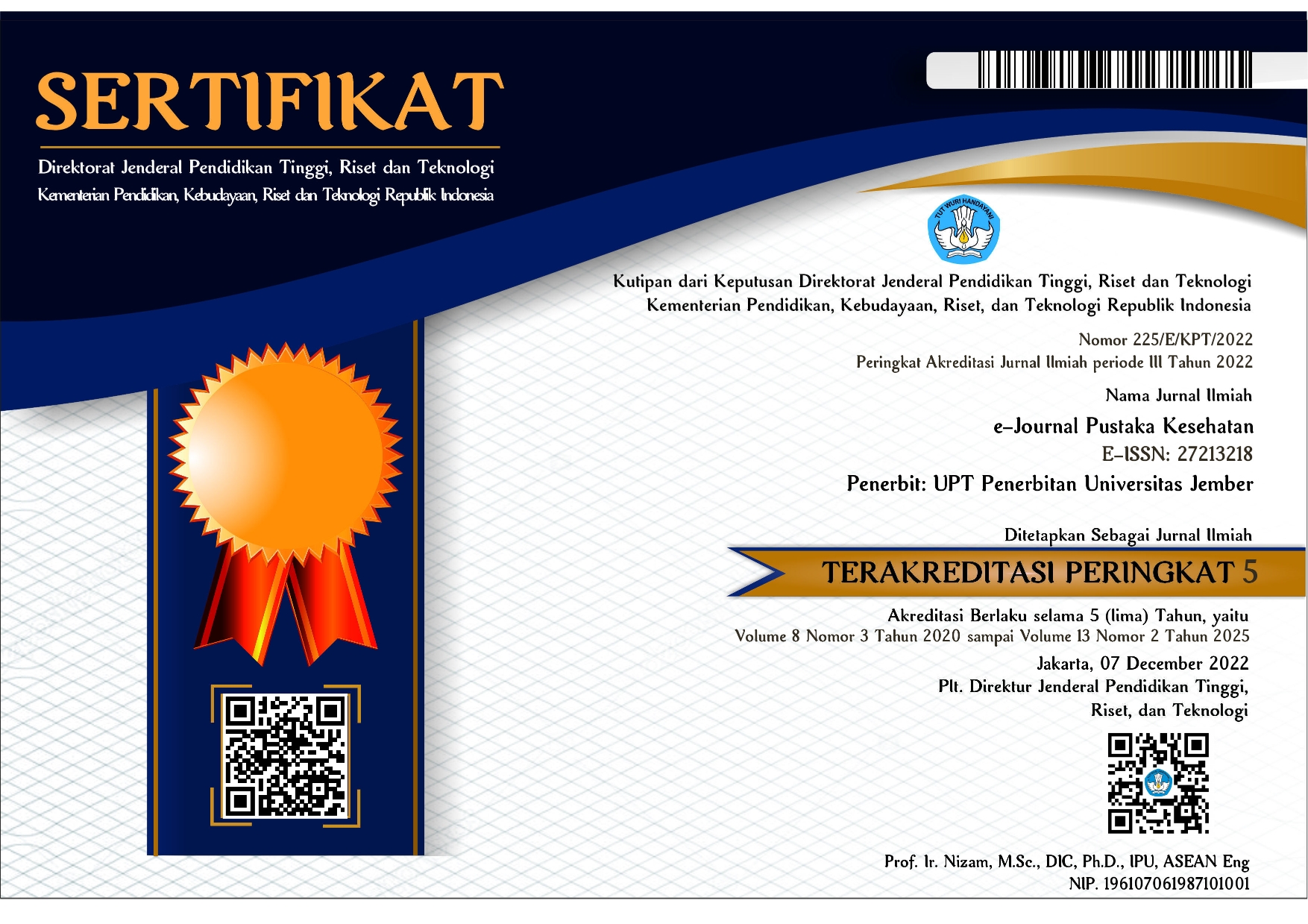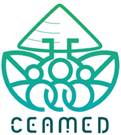Frekuensi Kegagalan Pengisian Saluran Akar dengan Teknik Preparasi Step Back pada Gigi Berakar Ganda di Rumah Sakit Gigi dan Mulut Universitas Jember 2011-2016 (The Frequency of Failure Root Canal Filling with Step Back PreparationTechnique on Multiple Ro
Abstract
Background: Most of root canal preparation use step back technique which form the root canal. The
cool lateral condensation technique is a standard technique taught to students, which has the highest
cure rate between 87% - 94% and a root canal filling was ended by 0-2 mm from the radiographic apex,
which the underfilling cure rate between 68% - 77% and the overfilling cure rate between 75% -76%.
Some research suggests that the molars teeth had the highest frequency of failure in root canal filling.
Objective: To identify the frequency of failure in root canal filling with preparation step back techniques
on a double-rooted teeth Dental Hospital of the University of Jember from 2011 until 2016. Methods: The
design of this study is a descriptive by gathering medical records. The radiograph pictures of doublerooted
teeth which underfilling and overfilling were evaluated by researcher, data was calculated with
manual furthermore data was displayed in tables and graphics. Results and Conclusions: Teeth with
underfilling of 68 teeth larger than teeth that overfilled a total of 18 teeth. The maxillary teeth with the
most underfilling are the teeth 14 and the tooth mandibular 46 where as the most overfilled teeth in the
maxilla are the teeth 26 and the mandibular is the tooth 46. The percentage of root canal treatment
underfilling and overfilling is 27.3% Overall number of patients with multiple root canal treatment.
Keywords: lateral condensation, overfilling, step back, underfilling
e-Journal Pustaka Kesehatan has CC-BY-SA or an equivalent license as the optimal license for the publication, distribution, use, and reuse of scholarly work. Authors who publish with this journal retain copyright and grant the journal right of first publication with the work simultaneously licensed under a Creative Commons Attribution-ShareAlike 4.0 International License that allows others to share the work with an acknowledgment of the work's authorship and initial publication in this journal.











